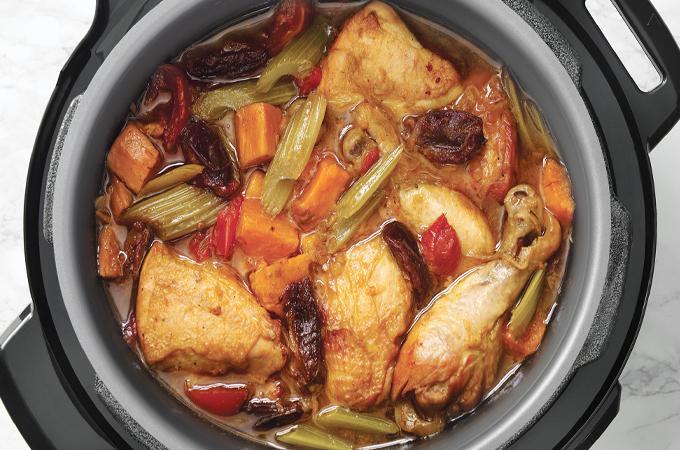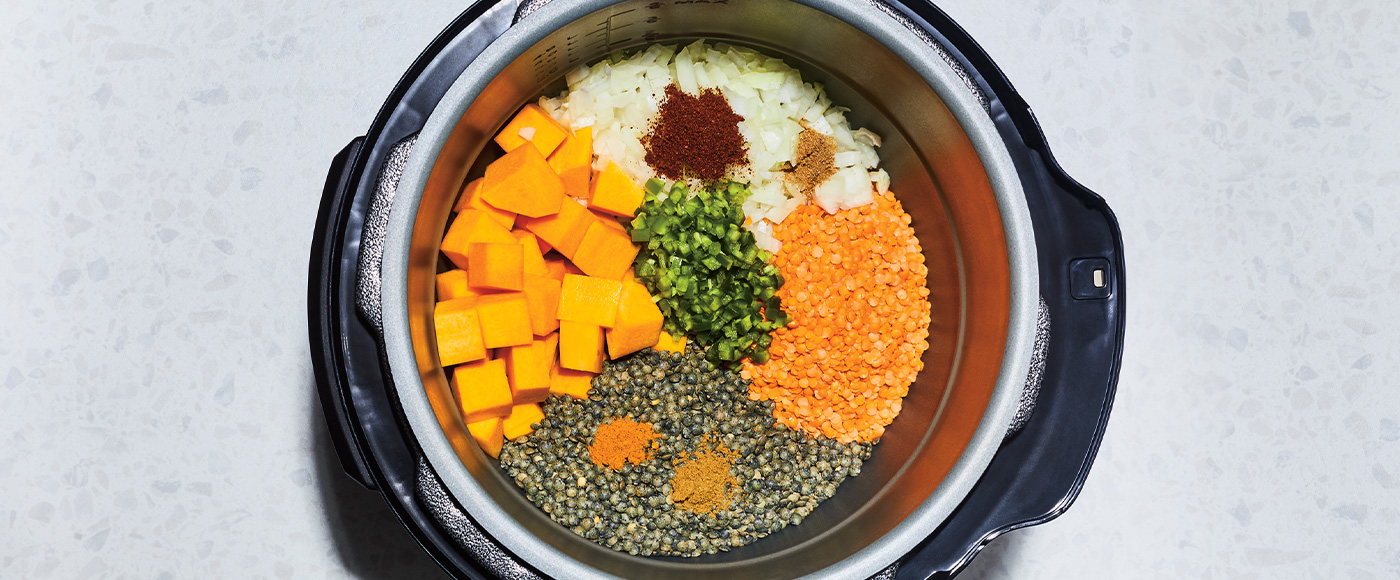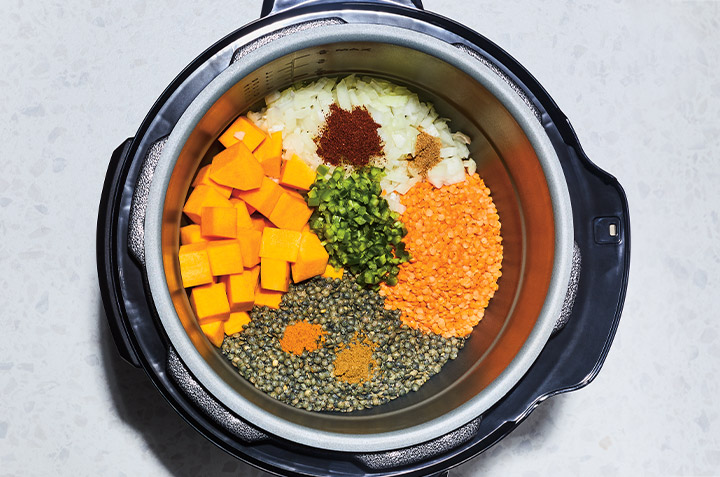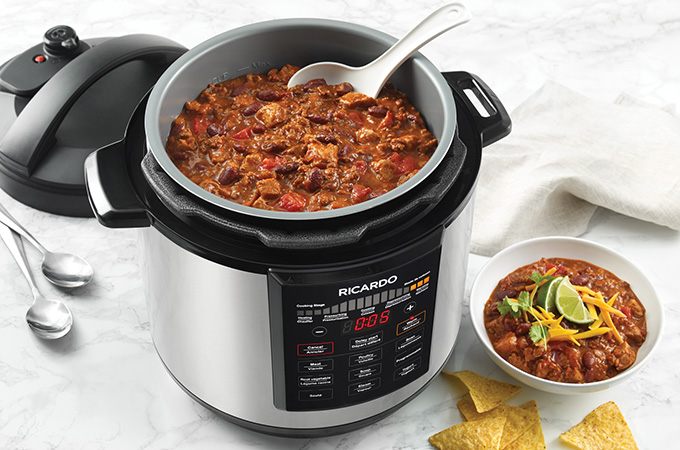
online store
RICARDO Multi-function Electric Pressure Cooker
The pressure cooker in five question
1. What is it?
Imagine the pressure cooker is a large pot in which you place your food, close the lid and press a button—except it cooks about three times faster. This makes this appliance more efficient than a stove! As a bonus, your food is full of flavour and packed with vitamins and minerals, as pressure cooking helps preserve nutrients. It’s like the crock pots of yesteryear, but more streamlined, versatile and intelligent.
2. How does it work?
The principle is simple: the pressure raises the temperature. Being trapped in the pressure cooker—thanks to an airtight lid—the heat allows food to be cooked very quickly.
3. Is it safe?
The unit is equipped with a steam calibration system that allows the excess steam to be drained (so the pressure cannot become too high). However, if it were to reach a critical level, the device would automatically shut down. There is therefore no risk of explosion.
4. Is it hard to maintain?
You can sauté, brown, deglaze and more in the same appliance, so no pan to wash or stove surface to clean. As our pressure cooker has a lid holder, there isn’t even any dirt on the counter! Plus, the non-stick cooking container and the stainless-steel steam tray go into the dishwasher.
5. What are the main benefits of a pressure cooker?
First, preparation is faster, since everything usually goes in together and is cooked in fewer steps. Then, the flavours are enhanced in a remarkable way—in twenty minutes, you can have a deliciously rich soup that tastes as if it had been simmering on the stove for hours.
All the functions
Our pressure cooker is multifunctional: it cooks all different types of dishes and has several uses. Here’s a roundup of what it can do.
- Pressure cooking: For meat (even the toughest cuts, which melt when cooked in the pressure cooker), poultry, legumes and root vegetables, such as carrots, beets, potatoes, etc.
- Sautéing: To brown vegetables or sear meats before pressure cooking a stew, chili, or spaghetti sauce. Or, ingredients to add at the end that require only light cooking, such as eggs, snow peas, peppers, etc.
- Steaming: For vegetables, such as broccoli, cauliflower or green beans, and fish, it is best to cook without pressure or to lightly cook certain foods, such as corn, rice and pasta, which are added after pressure cooking, without a lid. In any case, set the sautéing function with water in the bottom of the steam tray.
- Reheating: Once cooked, the pressure cooker naturally depressurizes and keeps food warm for up to 12 hours. It’s ready to be eaten whenever you want.
- Programmable: Set at high or low pressure depending on the recipe. Some delicate foods, such as spinach, flans and cheesecakes, are ideally cooked at low pressure for better results (but it’s always faster than on the stovetop).
- Yogurt: No pressure required; just add yogurt culture to milk at the time indicated by the device. This then maintains a very stable temperature throughout the process, which promotes the activation of enzymes.
1. Sensitive tomato paste
Some foods are more sensitive to heat, such as tomato paste. Thus, in a chili that contains it, it is placed on top, without mixing it in with the other ingredients.
2. Respect the amount of liquid
Without sufficient steam, the cooking process can’t take place due to a lack of pressure. But if you add too much liquid, your cooking sauce won’t be concentrated enough and will need to be reduced. In general, 1 cup (375 ml) of liquid (water, broth, juice, etc.) is required.
3. Double the recipes
Care should be taken not to fill the container beyond the recommended maximum level. And be mindful of foods that contain starches, such as potatoes, rice, cereals, legumes and pasta—they expand with heat and can overflow.
4. Convert recipes from the slow cooker to the pressure cooker
There isn’t one magic formula that applies to all recipes. The trick is to find a recipe for the pressure cooker that resembles the one used with the slow cooker. Then adapt it according to your tastes, ensuring that the solid to liquid ratio is respected, as well as the cooking time. It’s good to get used to the device before you start converting.
5. Recipes that don’t like the pressure cooker
Cooking pasta in the pressure cooker requires a great deal of precision and saves only a few minutes, so we prefer to cook it on the stovetop. Risotto is also best cooked in a saucepan since it has to be stirred often, which cannot be done in the pressure cooker. And it’s best to avoid grilling foods, as you won’t get a crispy, caramelized texture.
6. Time-saver tip
To accelerate heating the pressure cooker’s water (if the recipe requires it), heat it in the microwave first.
7. To depressurize
Naturally, the unit cools gently, which takes about 15 minutes. Depressurization can be accelerated by turning the release valve to the position indicated on the lid (with oven mitts or tongs because the steam coming out is very hot). Because proteins react differently to a sudden drop in moisture and this could affect the texture of food, recipes designed for the pressure cooker always tell you what to do.
8. Sauce shortcuts
To save even more time preparing dinner, try using RICARDO cooking sauces. They’re designed for cooking with a pressure cooker, slow cooker and stove. Available in four flavours, you can create a host of delicious meals quickly.

online store
RICARDO Cooking and Stir-Fry Sauces

The expert’s favourites
After testing our pressure cooker many times, Kareen Grondin, chef and RICARDO product development manager, reveals her favourite foods and recipes to cook using the pressure cooker.
Eggs
“I cook a dozen eggs on Sundays (six minutes for us, eight minutes for the children) on the steam tray, with 1 cup (375 ml) of water at the bottom of the container. The biggest advantage is that the eggshells peel in half with one small stroke.”
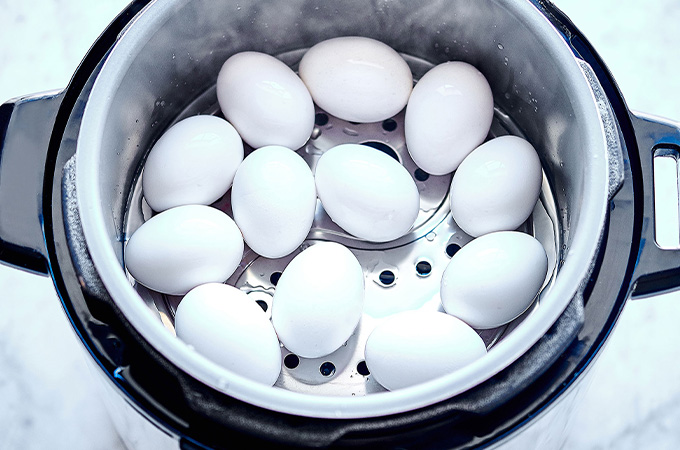
pressure cooker
Pressure Cooker Hard-Boiled Eggs
Oatmeal
“In the pressure cooker, steel cut oats are ready in 12 minutes instead of 40 minutes in a saucepan. It’s just as easy during the week as it is on weekends. And remember to cook on low pressure to avoid overflowing.”
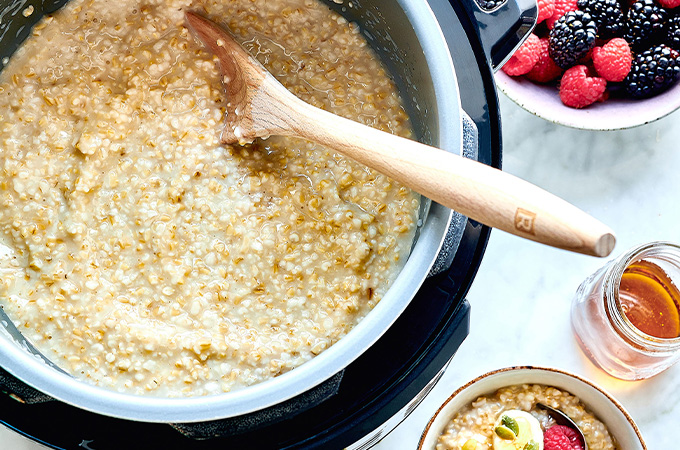
Pressure Cooker
Pressure Cooker Irish Oatmeal
Ribs
“Put 1 cup (375 ml) of water in the container, place the ribs standing on a silicone rack (sold separately or make it yourself with aluminum foil) after rubbing them with a dry marinade, and then cook for 30 minutes. Meanwhile, make barbecue sauce. At the end of the cooking time, coat the ribs with this sauce, then brown them in the oven or on the grill. They become tender and just fall apart.”
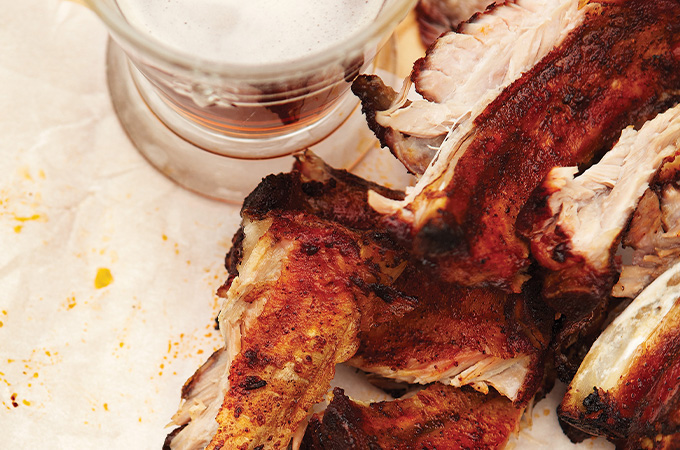
pressure cooker
Pressure Cooker Barbecued Ribs
Pulled meats
“Even on a Monday morning, you can mix the ingredients, prepare, cut and add the meat, and then pressure cook. In less than an hour, it’s done. If you have to go to work, leave it in warm mode. When you get back in the evening, the meat is ready for burgers or tacos.”
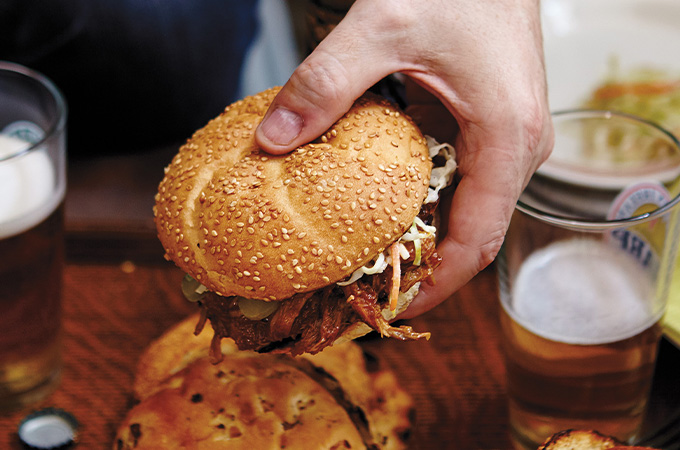
Pressure Cooker
Pressure Cooker Barbecue Pulled Pork
Burrito bowl
“Instead of making everything separately, I mix chicken, vegetables, canned black beans, commercial salsa and chicken broth. I add the rice, without mixing it, and it’s ready for cooking. This is my new go-to recipe that the kids love and we do twice a month. The best part? Only 10 minutes of cooking!”
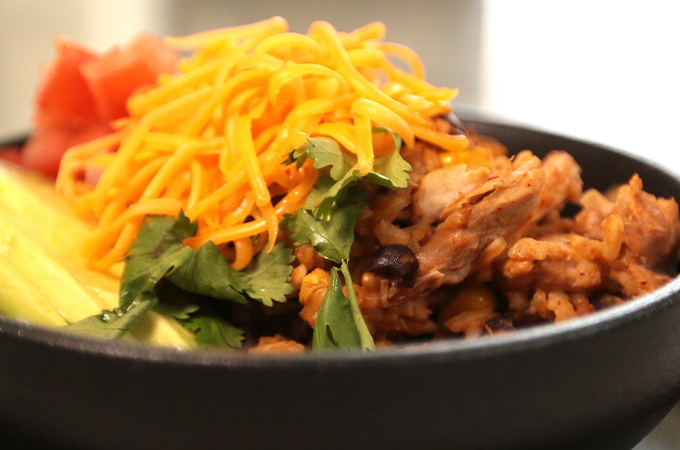
Pressure Cooker
Pressure Cooker Chicken Burrito Bowl
Want to cook more with the pressure cooker? Find all our recipes right here. Each one includes preparation and cooking times (including heating, pressurizing and depressurizing).
